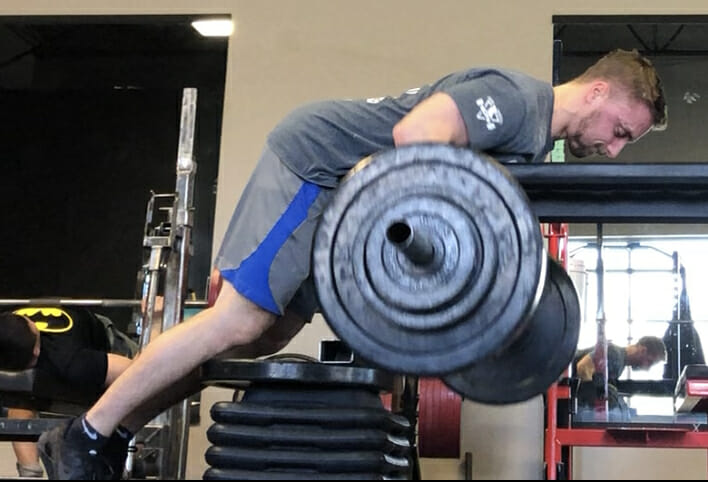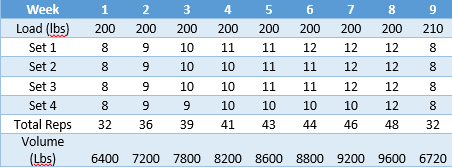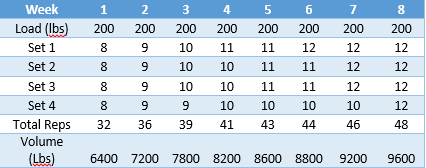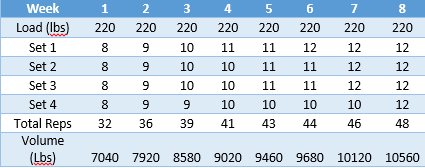The powerlifts unto themselves offer a lot to be gained in the long term with proper planning and progressive overload, though when trained in isolation they can leave some stones unturned when it comes to long term development, muscular balance, and general muscularity.
Not to be confused with secondary and supplementary movements such as pause squats, pin press, block pulls, etc. which are generally a derivative of the main lifts, accessory movements are generally smaller/less stressful exercises. This is due to 2 things:
1. They use inherently lighter loads that have to be used due to the nature of the exercise,
2. In the context of a powerlifting program, the goal is not to get the best barbell row (or other accessory lift), therefore it will not be as much of a focus in the program.

Before we begin, let’s outline some key components as to why and if you should even bother doing lifts outside of the squat, bench, and deadlift.
From a movement quality standpoint, accessory exercises will help to iron out the natural imbalances a powerlifting program will create as well as maintain joint/tendon health. This could be pulling muscles (upper back) that are not strong compared to the pressing muscles in the shoulders (chest, shoulders, etc), or strengthening the abs relative to the back. The idea behind this is preventing nagging injuries from developing in the long run is easier to do if you are proactive about it. From this point of view, I believe every powerlifter should be doing some form of “injury prevention” type accessory work.
The second main appeal to accessories is muscle gain. At the end of the day, a bigger muscle will be a stronger muscle. From this standpoint, the lifts can be very useful in having a lifter fill in or go up in a weight class. While the powerlifts will help you to gain muscle over time with progressive overload, gaining more muscle on your whole body is generally a more efficient use of your time and will allow for more total muscle mass to be gained.
If you’re already reasonably lean, at the top of your weight class, and are advanced enough, it’s probably not going to be as big of a priority for you to gain more muscle mass, but instead place more priority on the strength development component of your training to express more strength with their current level of muscle that you already have.
Given that there are about a million articles on the internet outlining the “best” exercises for x muscle or lift, I’m not going to be wasting your time with that. Instead, what I want to go over is how to program for your accessories within the context of a powerlifting program.
In the name of keeping things simple, double progression is the best model to use for accessories as it helps to maintain a reasonable dispersion of training volume between the main lifts and accessories while still providing progressive overload. If your training from your 3 lifts starts being hampered by your other training, that’s not ideal.
Double progression works by controlling load and reps. For example, we will use a 4 sets of 8-12 model here. You might start out working with 200lbs for 8 reps on a barbell row @9 RPE on week 1. The next week, you would do 200 for 4×9, then 4×10 the week after, and so on until you reach 4×12. At this point, you’ve reached the top of the rep range and you would increase load 5% and start at the bottom of the rep range and build back up.
The important thing to note with double progression is that you must get all of your sets with the top of the rep range before progressing in weight. This isn’t always as clean cut as the example above. Sometimes, it looks more like this:

Over the course of about 6 months, your training might look something like this




As the volume goes up over time, with enough calories, this theoretical lifter should be gaining muscle mass as well.
When it’s time to cycle lifts
Given that there is no event for who can lift the most in the barbell row, pullup, or ab wheel in powerlifting, it’s generally advisable to cycle through accessories instead of trying to train them like the main lifts. As a general rule of thumb, if you’ve stalled out on a lift, back cycled 10%, then built back up and are still plateauing at the same spot, it’s time to move on to another lift that will work similar muscles for a while. This can be as easy as swapping out a chin-up (underhand grip) with a pullup (overhand grip).
In time, you would come back to this lift and presumably, be stronger with it. This is where keeping a training log can prove to be very useful in the long run.
Practical takeaways:
– Use a double progression model for your accessory lifts.
– Make sure to manage the volume and amount of accessory lifts against your training for the big 3 so as not to impede on your recovery from those. At the end of the day, your powerlifting program should make you stronger at the squat, bench press, and deadlift. Anything else is secondary.
– The closer you get to a meet, the less accessory work you should be doing.
– Select exercises that are easy on your joints.
– There is no barbell row competition, so don’t be afraid to cycle between 2 or 3 accessory lifts over the course of a training cycle. This generally ends up with a different accessory lift every 8-24 weeks, depending on how advanced you are.
Being intelligent with your accessory work, you can build a stronger foundation and end up stronger and with less nagging injuries in the long run. That ain’t half bad.
If there’s anything you would want to read about in a future article, don’t hesitate to message me. If you found this article useful to your own training, please share this on your social media.